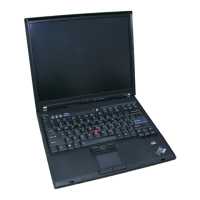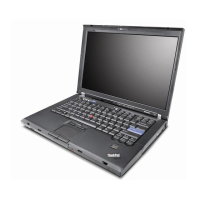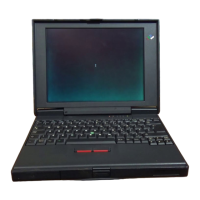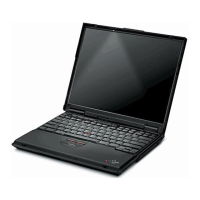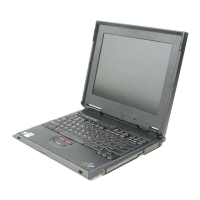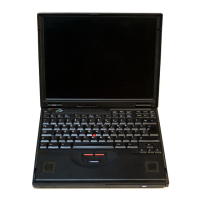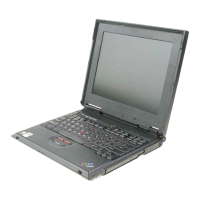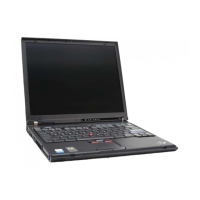Error
Checking
The tape adapter checks parity on both bus out and the
device address bus.
If
an.
error is sensed, the 'machine
chepk' line halts processing and turns on the
PROCESS
CHECK light. To clear this error condition, press
RESTART.
Parity generated by the tape adapter is put on bus in
to
the controller.
for
parity checking.
If
the
controller
senses
an
error on bus in parity, processing halts and
the.
PROCESS
CHECK light is turned
On.
Press
RESTART
to
clear the error condition.
CRC
(Cyclic Redundancy Check)
Cyclic redundancy checking is a mathematical method
of
checking transmitted bits
to
see
if
all bits were received.
The tape is written
with
a
two-byte
CRC
added
to
each
header and data record. This CRC is generated by the
microprogram using the record type byte and the 512
data bytes.
Read
eRC Errors
When a record is read, the
CRC
IS
generated by the
microprogram and compared
to
the
CRC
bytes read
from
the tape.
If
the generated
CRC
bytes are equal
to
the
CRC
bytes
read,.
the next operation begins.
If
the
CRC
bytes are
not
equal. the tape unit
backspaces, rereads the data record, and compares the
CRC
bytes again.
If
the retry is successful
(CRC
bytes
equal), the next operation is allowed.
If
a
CRC
error still
exists after 10 retries, the tape unit stops and the
controller puts
an
error message on the display.
444
Write
CRC
Errors
When a record is written, the tape unit erases the track
to
provide
a.
clean surface
to
write a new record,
backspaces, and reads the new record
to
check the
CRC.
This is done on the same pass since the erase
coil is located ahead
of
the
read/write
coil.
If
the
CRC
generated by the microprogram is equal
to
the
CRC
read from the tape, the next operation begins.
If
the
CRCs
do not compare, the tape unit backspaces
to
the beginning
of
the record and attempts
to
write the
record a maximum
of
ten times.
After
the tenth write, a
hex
24
(bad record) is written in the record type byte.
The tape unit then skips
to
the next record where
it
attempts the write operation again. There is no limit
to
the number
of
records
that
can be labeled bad and
skipped.
If
the tape unit is unable
to
write
a hex
24
in the record
type byte after ten attempts, the controller puts
an
error
message (07) on the display.
Error Reporting
When any error condition is detected by the controller,
it
is reported by
an
error code. Many error codes (such as
end-of-file)
indicate a programming problem rather than
a tape unit problem. Several codes, such
as
a status
error (03) and a
CRC
error (07), can indicate a tape unit
problem (refer
to
Error
Codes
in Section
3).
In addition
to
the error codes. other information
is
available in
read/write
storage that can
be
examined by
using the DISPLAY
REGISTER
switch on the control
panel. The most recent status byte is located at address
hex
DOSF.
Many programming errors are never reported because
the microprogram automatically retries the operation
for
any
CRC
error. These retries are seen
as
additional tape
motion and cause extra time
for
customer jobs.
/
\ .
./
\
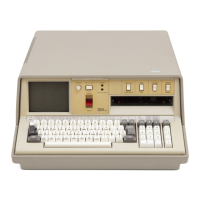
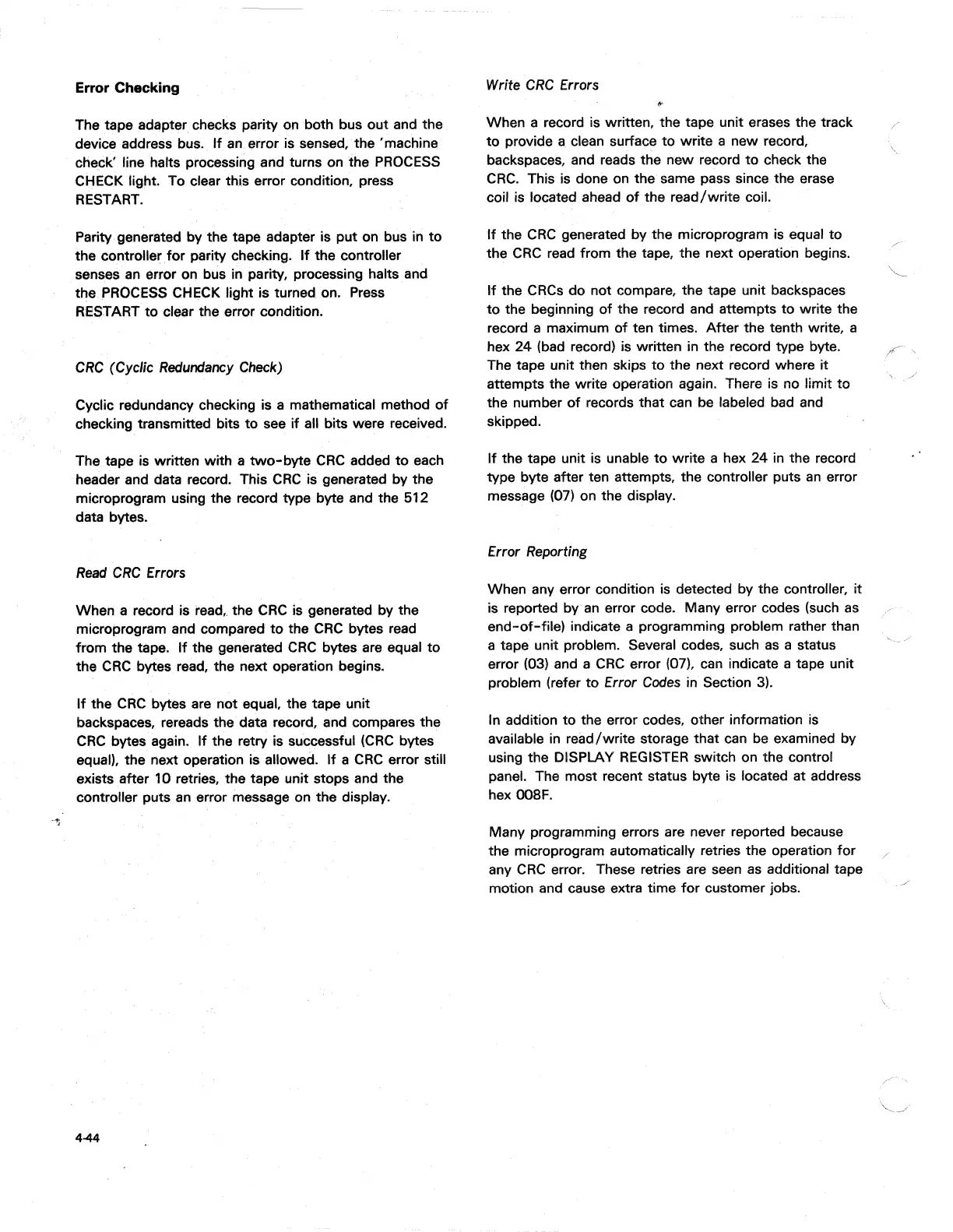